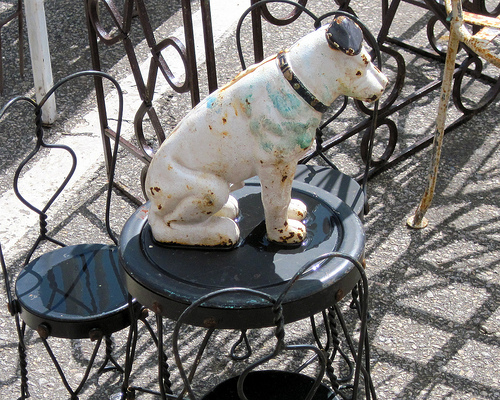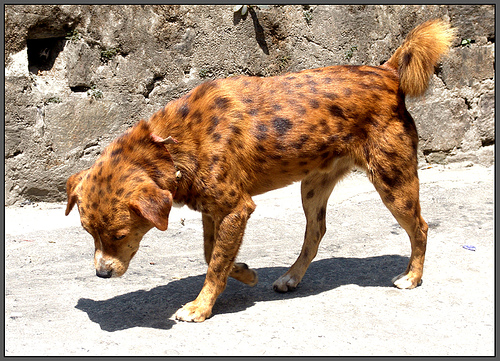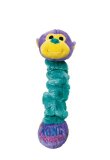Check out these Dog images:
Nipper “RCA Dog”

Image by John O Dyer
Nipper, the dog was born in Bristol, England in 1884. Nipper was a mutt, part bull terrier and a trace of fox terrier. He got the name because he like to nip the back of peoples legs, like puppies do. His first owner, Mark Barraud, died in 1887, Nipper was taken to Liverpool by Mark’s younger brother, Francis, who was a struggling painter.
In Liverpool, Nipper discovered the Phonograph, a cylinder recording and playing machine and Francis Barraud "often noticed how puzzled he was to try to figure out where the voice came from." Barraud commited this scene to memory, because it wasn’t until three years after Nipper died, September of 1895, that he painted the scene of Nipper trying to make out where the sounds were originating from.
In 1898 Barraud completed the painting and registered it on 11 February 1899 as ‘Dog looking at and listening to a Phonograph.’
Barraud then decided to rename the painting ‘His Master’s Voice’ and tried to exhibit it at the Royal Academy, but was turned down. He had no more luck trying to offer it for reproduction in magazines. "No one would know what the dog was doing" was given as the reason!
Next on Barraud’s list was The Edison Bell Company, leading manufacturer of the cylinder phonograph, but again without success. "Dogs don’t listen to phonographs," the company said.
Barraud was given the advise to repaint the horn from black to gold, as this might better his opportunity for a sale. With this in mind, in the summer of 1899 he visited 31 Maiden Lane, home of the newly formed Gramophone Company, with a photograph of his painting and a request to borrow a brass horn.
As Barraud later wrote in an article for The Strand magazine: "The manager, Mr Barry Owen asked me if the picture was for sale and if I could introduce a machine of their own make, a Gramophone, instead of the one in the picture. I replied that the picture was for sale and that I could make the alteration if they would let me have an instrument to paint from."
This painting made its first public appearance on The Gramophone Company’s advertising literature in January 1900, and later on some novelty promotional items. However, ‘His Master’s Voice’ did not feature on the Company’s British letter headings until 1907. The painting and title were finally registered as a trademark in 1910.
It was also in 1900 that a seemingly innocuous request led to the eventual disappearance of ‘His Master’s Voice’ as a label trademark. Emile Berliner, inventor of the gramophone, asked Barry Owen to assign him the copyright of ‘His Master’s Voice’ for America. Owen agreed, as he did in 1904 to a similar request from Japan. Some eighty years later, when the arrival of the Compact Disc prompted record companies to start manufacturing centrally for the world, EMI paid the price of losing its rights in these two vital territories – and EMI Classics was created as a successor to ‘His Master’s Voice’.
Meanwhile Francis Barraud spent much of the rest of his working life painting 24 replicas of his original, as commissioned by The Gramophone Company. Following his death in 1924 other artists carried on the tradition until the end of the decade.
During its long active life, the ‘His Master’s Voice’ label has enjoyed a unique reputation with both the music business and the public. Over the years a healthy market has developed in collecting the vast array of items produced in its image. A Collectors’ Guide, originally published in 1984, has been now updated for publication in 1997.
Though only used by EMI today as the marketing identity for HMV Shops in the UK and Europe, the ‘His Master’s Voice’ trademark is still instantly recognized and sits proudly and firmly in the Top 10 of ‘Famous Brands of the 20th Century’.
dog from Kalimpong

Image by Sukanto Debnath
(Explore-d#2 on 25th December 2008)
I have never seen a dog like this before, have you?
some naughty cat has something to do with this, I think
Dog in the fence

Image by dgj103
This dog barked at us through the gap in the fence. When we returned after visiting Long Melford, the hole in the fence had been filled in.
Reposted for fun




